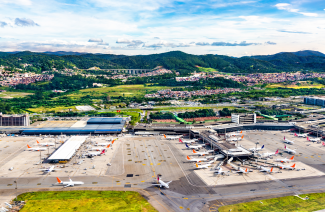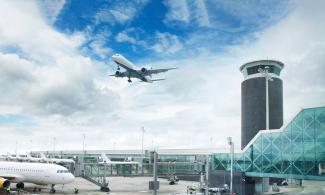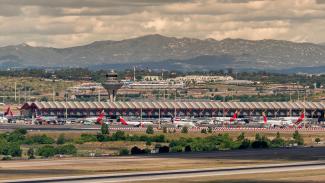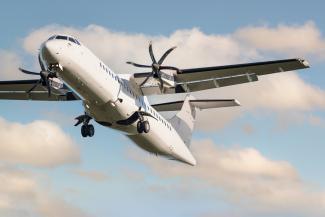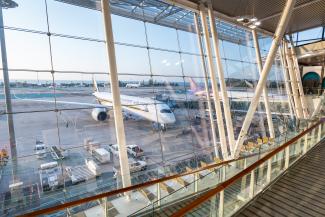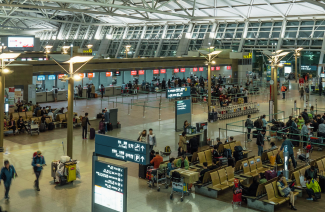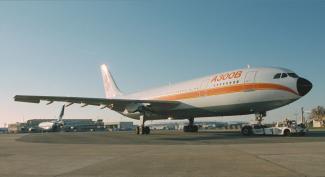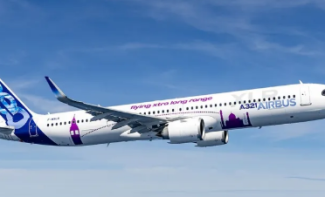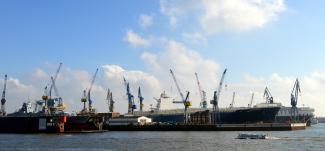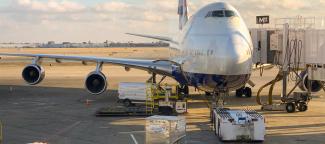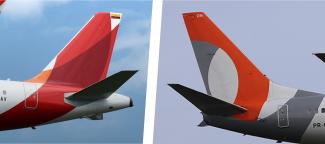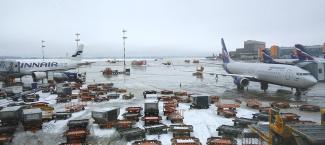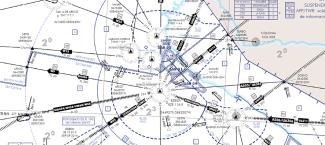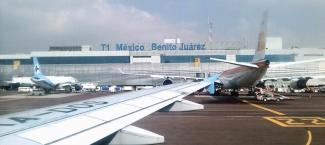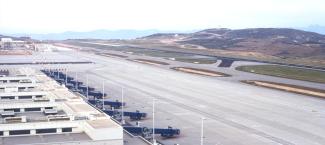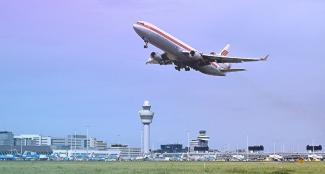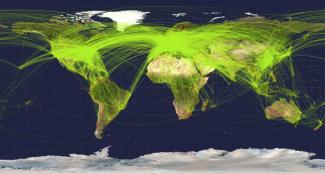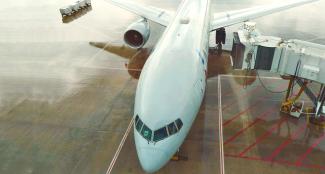Air connectivity plays a crucial role in driving economic development and fostering territorial integration by facilitating business, trade, tourism, and cultural exchange. Despite the development of the air transport sector in Latin America over the past decades, its air connectivity landscape still differs notably from the more mature European market. What are the main factors that explain these differences and how might they be limiting the region's development?
First and foremost, it is necessary to define the boundary conditions at both the geographic and socioeconomic levels. Latin America has a population of around 653M people and spans a vast area of 20.14 million square kilometers, making it significantly larger in landmass than Europe, which has about 5.9 million square kilometers and a population of approximately 605M people. This translates into a much lower population density in Latin America compared to Europe on average.
Furthermore, both regions exhibit high levels of urbanization, but Latin America is characterized by an even higher concentration of population in cities. In Latin America, more than 80% of the population lives in urban areas, with large metropolitan centers such as Mexico City, São Paulo, and Buenos Aires dominating. In contrast, while Europe is also highly urbanized, with about 75% of its population living in cities, the distribution of population across cities tends to be more evenly spread, with fewer super-sized metropolises.
Economically, Latin America is marked by significant diversity in GDP per capita. The regional average ranges between $8,000 USD and $10,000 USD. However, there are notable disparities: countries such as Chile and Uruguay have averages of between $18,000 USD and $25,000 USD, while others, such as Honduras and Guatemala, have considerably lower averages of between $4,000 USD and $5,000 USD. In contrast, Europe (excluding Russia) enjoys a higher and more uniform economic profile, with average GDP per capita exceeding $20,000 USD across all countries. This stark contrast underscores the significant economic disparity within Latin America, compared to the generally more prosperous and evenly distributed economic conditions in Europe.
This geographic and economic structure in Latin America leads to the existence of vast regions with very low population density, creating significant disparities between highly urbanized areas and sparsely populated rural zones. These sparsely populated areas are likely to correspond to populations with lower purchasing power, further exacerbating economic inequality within the region.

These basic indicators can already provide a preliminary idea of the differences in the structure of air connectivity between both regions, as the disparities in population distribution and economic development play a critical role in shaping the supply for air transport.
Latin America's low GDP per capita has a significant impact on the air travel market, resulting in a low propensity to fly among the region's inhabitants. In 2019, the region recorded an average of only 0.41 trips per capita, a figure that is projected to increase to 0.72 trips per capita by 2040. Europe, with its more stable economic environment, demonstrates how rising disposable incomes can lead to an increased propensity to fly. In 2019, the European air travel market recorded an average of 1.64 trips per capita, and this is forecast to increase to 2.87 trips per capita by 2040.

Air travel demand and propensity to fly
This reality in Europe can be partly explained by the volume-driven nature of the aviation business. As disposable incomes rise, the demand for air travel increases, which in turn allows airlines to scale up their operations. The larger volume of passengers enables airlines to spread fixed costs—such as aircraft maintenance, airport fees, and staff salaries—over more tickets, which reduces the overall cost per seat. As a result, lower ticket prices stimulate even greater demand, reinforcing a cycle where increasing demand leads to more capacity, which further reduces costs. This positive feedback loop of growing air traffic connectivity is more easily achievable in Europe due to its higher disposable incomes and greater propensity to fly.
In contrast, Latin America's lower GDP per capita restricts this cycle, limiting the growth of air travel demand and making it more challenging for the region to experience similar reductions in ticket prices and improvements in connectivity. Therefore, ticket prices in Latin America are currently considerably higher than in Europe. The unit price of a ticket (per passenger and distance flown) in Latin America is three to four times more expensive than in Europe, especially in the medium-long-haul sector.

While, in general terms, purchasing power can broadly explain a significant difference between both markets, it is necessary to delve deeper to uncover the intrinsic characteristics of each region.
Latin America's regional air network is less diversified but features denser routes compared to Europe. While key airports such as those in Mexico City, Bogotá, Lima, and Santiago serve as major hubs, many medium and smaller airports lack sufficient connections. This limited network hinders regional integration and regional economic growth. In contrast, Europe boasts a much broader connectivity with a well-distributed network, enabling extensive regional and international travel.
Connectivity Index and regional integration
The network of the airports of Latin America can be further characterized with the Connectivity Index (as per the definition of IATA). The Connectivity Index is computed assigning a value to each the seats offered in an airport. This weight is dependent on how well connected the origin or destination of the route is. In other words, a seat offered in a route to a hub is assigned a much higher weight than the case to an airport with limited routes. By cross analyzing the Connectivity Index and the volume of traffic in the airport (in terms of departing seats), three main categories can be identified:
- Airport with high regional connectivity. This groups consists of four main airports (LIM, SCL, BOG and MEX) and have both a high connectivity index and traffic volume.
- Medium airports with high indirect connectivity. This groups consists of four main airports (CUN, MDE, MTY and GDL).
- Minor and medium airports with low indirect connectivity.
The intermediate category of medium-sized airports with high indirect connectivity is characterized by their role as regional or secondary hubs, maintaining frequent and well-integrated connections to major hubs. These connections enhance their connectivity index, allowing passengers to access a broader range of destinations via hub-and-spoke networks. For example, Guadalajara (GDL) and Monterrey (MTY) benefit from frequent links to Mexico City (MEX), a key national and international hub. Similarly, Cancún (CUN) and Medellín (MDE) act as secondary hubs, leveraging their connections to larger airports to boost their indirect connectivity.
The analysis reveals that while major Latin American airports demonstrate strong regional connectivity, numerous minor and medium airports exhibit low indirect connectivity, underscoring the need for improved infrastructure and better integration into the global air travel network.
If the same analysis is performed to calculate the Connectivity Index for the European market, a distinct pattern emerges. In Europe, regional airport connectivity shows a much stronger correlation with the annual offer of seats. This means that as the traffic volume of an airport increases, its connectivity index grows almost proportionally. This high degree of correlation highlights Europe’s dense and well-integrated regional air transport network, where even secondary airports play a significant role in facilitating intra-European travel. At the top of the list for regional interconnectivity are airports such as MAD, BCN, FRA and AMS. These airports act as key nodes within the European network, offering extensive regional connections that ensure seamless passenger flows across the continent. Unlike Latin America, where regional hubs dominate while medium and minor airports face challenges with low indirect connectivity, Europe benefits from a more evenly distributed regional network.

The route network in Latin America is significantly more concentrated than in Europe, with Latin America relying heavily on a centralized hub-and-spoke model. This model involves multiple markets connecting through a few central hubs, resulting in fewer direct routes between non-hub cities. Consequently, this limits accessibility and convenience for passengers needing to travel between smaller or less central markets. In contrast, Europe boasts a more diversified route network with numerous point-to-point connections between secondary airports. This extensive network supports better connectivity and flexibility, allowing passengers to travel directly between various markets without the need to transit through a central hub. To illustrate, Latin America has 278 markets connected by 695 routes, whereas Europe has 370 markets with 2,855 routes. This stark difference means the route network in Latin America is up to five times more concentrated than in Europe. The high concentration in Latin America can lead to inefficiencies and inconvenience for travellers, who often need to pass through major hubs to reach their destinations. Meanwhile, Europe's extensive network of direct routes offers greater convenience and reduces travel time, enhancing the overall travel experience.

The supply of transversal routes in Latin America, constituting 54% of total route availability, arises primarily from the need to connect markets that are not served by large hubs. In contrast, Europe has a higher percentage of transversal routes, with 64% of the total being cross routes.
In Latin America, only 51% of the transversal routes connecting the same origin and destination (O&D) markets have an equivalent route passing through a hub. Meanwhile, in Europe, 85% of the transversal routes have an equivalent O&D route connecting through a hub, indicating a greater redundancy of routes in the region. This segmentation shows that although both regions have a significant number of cross routes, the European network is more extensive and diversified, offering better direct connectivity and flexibility to travellers.

Airline market structure and competition
The Latin American air market is also dominated by a few airlines, concentrating the majority of the region's capacity, which contrasts with the more diversified European market. In Latin America, 89% of the market share is controlled by just 10 airlines, with LATAM Airlines Group being the largest, followed by carriers like Volaris and Avianca. This high concentration indicates a less competitive environment, which can lead to higher ticket prices and fewer options for consumers.
In contrast, the European air market is more competitive, with 61% of the market share spread across the top 10 airlines. Major players like Ryanair, Deutsche Lufthansa AG, and EasyJet dominate the scene, but the presence of numerous other airlines fosters competition. This competitive environment in Europe contributes to lower ticket prices and better level of service for passengers.

This trend is further reinforced when analyzing the number of airlines per route in Latin America, where Full-Service Carriers (FSC) account for 61% of the total supply of seats, while Low-Cost Carriers (LCC) account for 39%. Despite their smaller share, LCCs foster greater competition on the routes they operate. The data reveals that 72% of LCC-operated routes are served by two LCCs, with an average of 1.7 LCCs per route, reflecting a more competitive environment that benefits consumers through greater choice and potentially lower fares.
In contrast, routes operated by full-service carriers tend to show monopolistic tendencies, with 59% of routes served by a single full-service carrier and an average of 1.4 airlines per route. This limited competition in the FSC segment not only restricts consumer choice but can also lead to higher fares and less service flexibility. These results highlight a significant imbalance in the Latin American airline market. Although LCCs are introducing more competition, their smaller overall market share limits their impact on regional connectivity. Meanwhile, the dominance of FSCs, coupled with their monopolistic tendencies on many routes, further entrenches the concentrated market structure.

Future outlook for Latin American connectivity
In summary, Latin America's air connectivity is hindered by significant structural and economic challenges that limit both accessibility and affordability. The region's vast geography, low population density, and economic disparities restrict demand for air travel, leading to higher costs and limited accessibility compared to a mature market like Europe. The dominance of Full-Service Carriers, coupled with a highly concentrated market controlled by a few airlines, results in reduced competition and fewer options for consumers. In addition, network imbalances exacerbate these problems, with Latin America's major hub airports dominating connectivity, leaving smaller airports underserved and reducing overall accessibility. This market structure perpetuates inefficiencies, driving ticket prices 3-4 times higher than in Europe for similar distances.
Latin America's air connectivity is expected to evolve towards a European-like model in the near future, with an expected growth in cross routes and the development of secondary airports. Increased competition could enhance accessibility, lower costs, and create a more balanced network. By creating a more competitive, inclusive, and affordable air market, Latin America will be able to reap the full benefits of efficient air connectivity, boosting its economic development, and ensuring territorial integration.
Appendix
In the study carried out, it is crucial to highlight that while the European market analyzed includes all countries for a global view, the analysis of the Latin American market excludes Brazil. This decision is based on the unique characteristics of Brazil's aviation sector.
Brazil is a large country with a well-developed and mature domestic aviation market, which has an extensive domestic flight network. Including Brazil in the analysis could skew the results due to its significant impact on regional connectivity metrics. Brazil's advanced domestic air transport infrastructure and high volume of domestic flights would overshadow conditions in other Latin American countries, resulting in a distorted view of the region's overall connectivity. By excluding Brazil, the analysis aims to provide a clearer and more accurate representation of air connectivity in Latin America. This approach ensures that the unique dynamics and challenges faced by other Latin American countries are not diluted by the disproportionate influence of Brazil's advanced aviation market.

